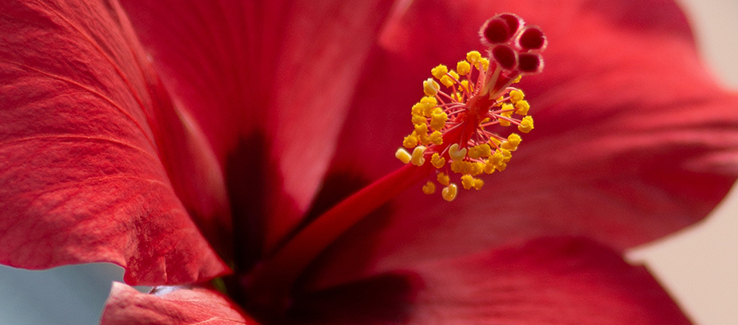
Need help keeping erosion from stripping away your property’s fertile soil? Knowing how soil erosion happens can help you make changes to your property’s landscape and preserve its crucial topsoil.
fasttreeremovalatlanta.com gathered the following information to help protect your property’s topsoil and develop an erosion-resistant landscape.
What Causes Soil Erosion?
Soil erosion occurs when land is exposed to prolonged drought, strong winds, hard rains, and flowing water. In addition, compaction, loss of soil structure, nutrient degradation, and soil salinity are contributing factors to soil erosion. Human activities like farming, cattle grazing, and land clearing can also leave soil vulnerable to rapid erosion.
How to Prevent Soil Erosion
Wind, water, compaction, and man-made erosion degrade soil quality. Erosion also significantly reduces water quality by contaminating waterways with chemicals, debris, and other pollutants. Consider the following to slow erosion on your property:
Plant Ground Cover
Fast-growing ground cover is ideal for landscape areas where nothing seems to take root. Such bare areas are often found under trees or in overly moist areas and are highly susceptible to soil erosion. The following fast-growing ground cover species are ideal for filling in these spaces:
- Creeping Juniper (Juniperus horizontalis) – Thrives in full sun
- Creeping Phlox (Phlox stolonifera) – Thrives in full sun
- Creeping Thyme (Thymus serpyllum) – Thrives in full sun
- Bunchberry (Cornus canadensis) – Thrives in partial or full shade
For more species and information on ground cover plants read The Best Ground Cover Plants.
Plant Native Shrubs

Prevent planting shrubs or small trees that can’t survive your region’s weather. Knowing which shrub species are native to your area will help you cultivate a flourishing landscape resistant to erosion. Consider the following species:
- False Indigo Bush (Amorpha fruticosa) – Thrives in full sun or partial shade
- Hardy Hibiscus or Swamp Rose Mallow (Hibiscus moscheutos) – Thrives in full sun
- Blackhaw or Stagbush (Viburnum prunifolium) – Thrives in partial shade
- Devil’s Walking Stick or Hercules’ club (Aralia spinosa) – Thrives in full sun or partial shade
Read 7 Native Shrubs for Georgia Landscapes for more about planting native shrubs.
Plant Shade Trees
Trees provide shade on humid summer days, increase a property’s value, improve landscape health and biodiversity, and significantly reduce soil erosion. Consider planting the following tree species on your property:
- Crepe Myrtle (Lagerstroemia) – Thrives in full sun
- River Birch (Betula nigra) – Thrives in full sun or partial shade
- Sweet Gum (Liquidambar) – Thrives in full sun
- Weeping Willow (Salix babylonica) – Thrives in full sun or partial shade
Prevent Soil Compaction
When soil compaction occurs, it forms a barrier beneath the topsoil that prevents water absorption. Compacted soil significantly contributes to soil erosion, worsening the soil’s health and ability to sustain life. The following will help you improve your soil and prevent erosion as a result of compaction:
Avoid Traffic – Reduce or stop foot and vehicle traffic on your property. Install graveled, mulched, or cemented pathways in areas that must be transited.
Tilling – Avoid tilling your soil when it is too wet or dry. Unless absolutely necessary, don’t till your soil more than once a year. If you can eliminate tilling altogether, that’s even better.
Aerate the Soil – An aerator will either remove plugs of soil or puncture the ground allowing the soil room to decompress.
Amend the Soil – Work in rich organic materials like compost, peat moss, and gypsum to loosen or prevent compacted soil.
Earthworms – Significantly improve soil quality and structure by allowing earthworms to burrow their way through the soil, leaving tunnels and excrement behind, helping aerate and fertilize it.
Protect Soil with Mulch and Matting

Mulch and matting weigh down the soil, protecting seeds and plants while preventing erosion.
Mulch – Mulch retains water, stabilizes soil temperature, and prevents bare soil from being washed away. For gardens and landscapes, use wood mulch. Organic mulch will provide nutrients to any landscape or garden, helping plants thrive and keeping soil structure in place.
Matting – Use mulch matting to hold soil and vegetation in place on steep slopes. Matting is made from straw, wood, coconut, and other natural fibers. It is eco-friendly and does not prevent plant growth.
Install Diversions
Creating diversions allows you to redirect rain or floodwater in the direction you want it to go. Some common methods used to divert water include installing or building:
- French Drains
- Catch Basins
- Retaining Walls
- Swales
- Gutter Systems
- Rain Gardens
- Dry Streams
- Dry Well
- Trenches
Tip: For best results, hire a professional landscaper to help design and install your water diversion feature(s).
Preventing Soil Erosion
In this article, you discovered essential information, definitions, and actions you can take to prevent erosion from stripping your landscape’s fertile topsoil away.
Controlling the flow of rainwater and storm drainage, and planting turf, ground cover plants, shrubs, and trees, helps you effectively prevent erosion from whisking away your property’s soil.
Failing to protect your property’s exposed land can result in erosion, leaving you with barren, compacted soil void of life-giving organic nutrients.
Sources:
worldwildlife.org/threats/soil-erosion-and-degradation
web.uri.edu/safewater/protecting-water-quality-at-home/sustainable-landscaping/reduce-soil-erosion/
blog.uvm.edu/jkarson/what-can-prevent-erosion/
marinmg.ucanr.edu/Great_Gardening_Information/Gardening_Tips_Techniques_and_Terminology/Gardening_Basics/Preventing_Erosion/
(404) 220-9965
(404) 220-9963
To view the orignal version of this post, visit: https://www.fasttreeremovalatlanta.com/how-to-stop-erosion-on-your-property

No comments:
Post a Comment